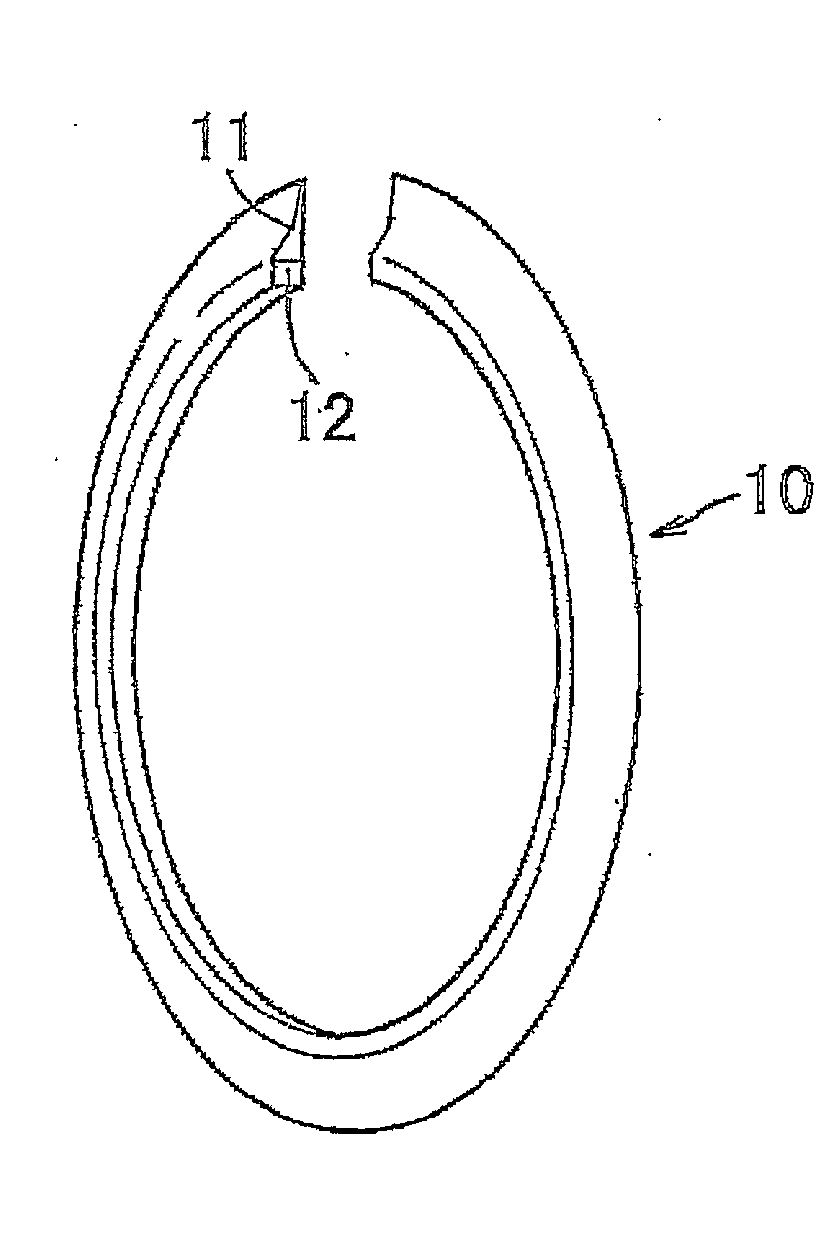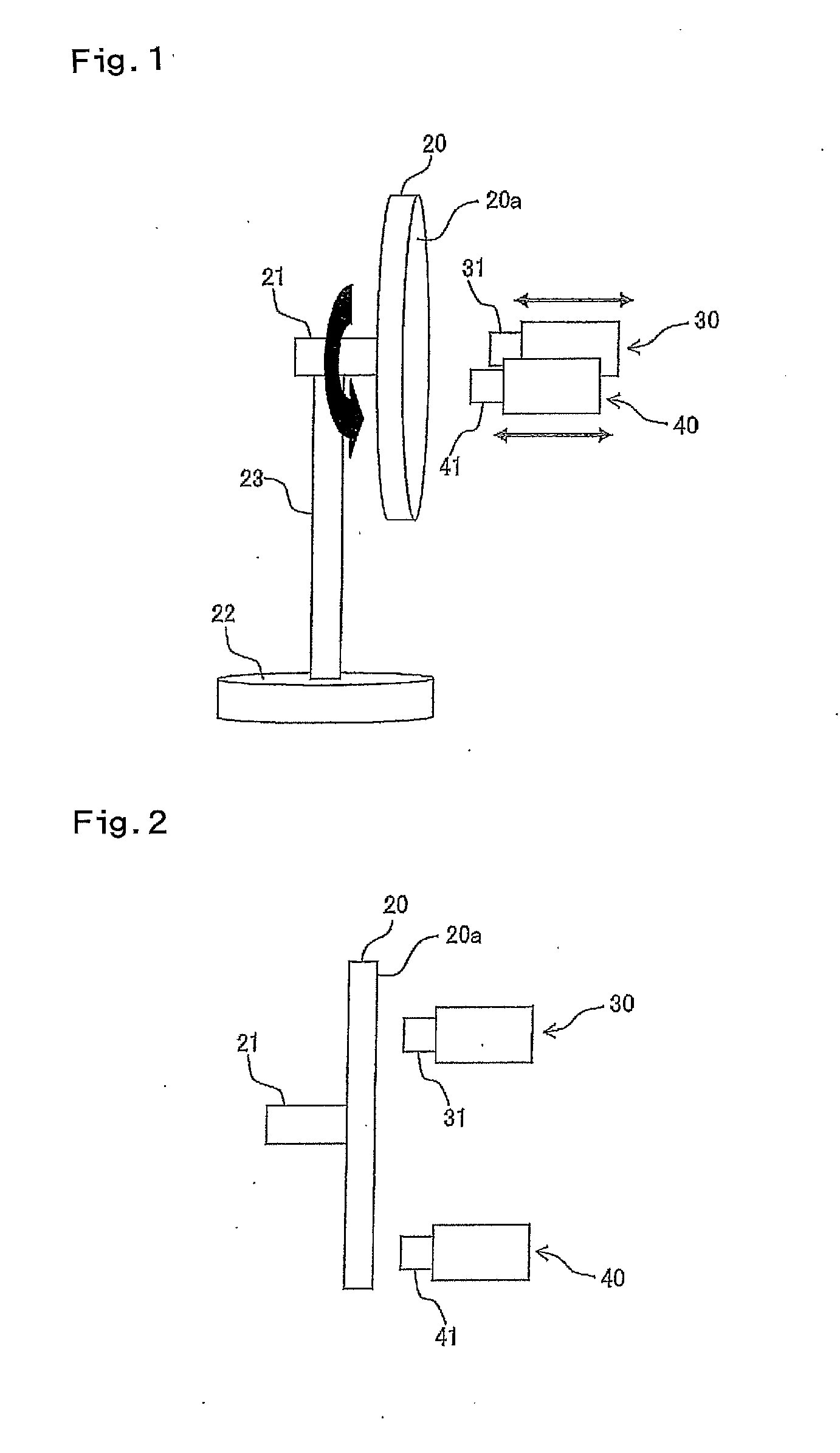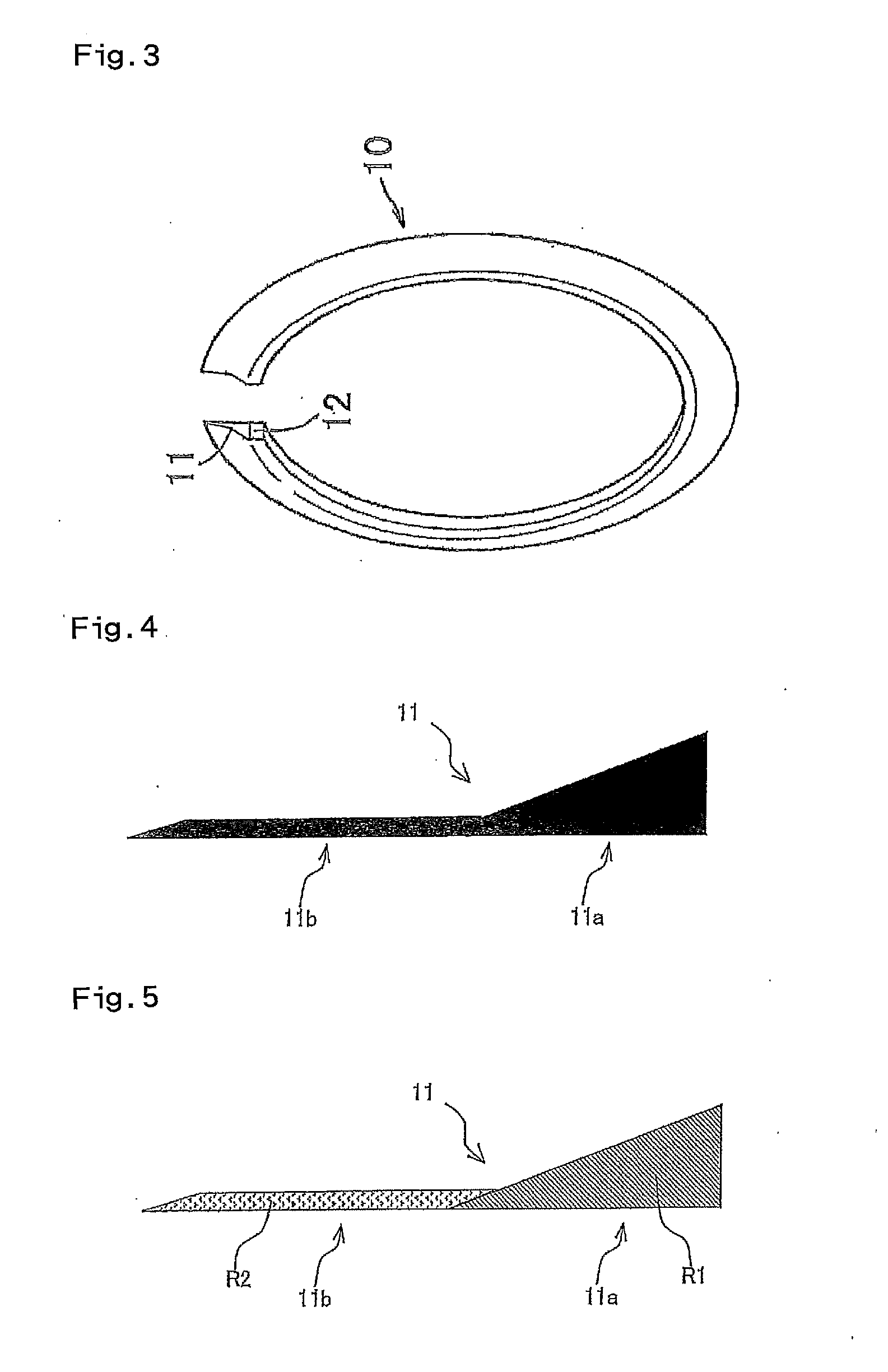Method for molding annular member and apparatus for molding annular member
a technology of annular member and annular member, which is applied in the direction of dough shaping, manufacturing tools, food shaping, etc., can solve the problems of difficult adjustment of bonding position and the length of the bead, and achieve the effect of eliminating the difference in level at the bonded portion
- Summary
- Abstract
- Description
- Claims
- Application Information
AI Technical Summary
Benefits of technology
Problems solved by technology
Method used
Image
Examples
Embodiment Construction
[0024]
[0025]Embodiments of the present invention will be described below with reference to the drawings. FIG. 1 is a perspective view of an outward appearance showing a schematic configuration of a apparatus for molding an annular member according to the present invention. FIG. 2 is a plan view, from the above, of the apparatus for molding an annular member shown in FIG. 1. FIG. 3 is a partially cut-away perspective view of a bead member. FIG. 4 is a sectional view of a bead filler.
[0026]In this embodiment, the annular member is a bead filler 11. As shown in FIG. 3, the bead filler 11 is placed on an outer periphery of a bead core 12, and the bead filler 11 and the bead core 12 configure a bead member 10.
[0027]A cross-sectional shape of an inner peripheral part 11a of the bead filler 11 is substantially triangular, and a cross-sectional shape of an outer peripheral part 11b of the bead filler 11 is rectangular having a substantially constant thickness. An outer peripheral end is tap...
PUM
| Property | Measurement | Unit |
|---|---|---|
| shape | aaaaa | aaaaa |
| cross-sectional shape | aaaaa | aaaaa |
| speed | aaaaa | aaaaa |
Abstract
Description
Claims
Application Information
 Login to View More
Login to View More - R&D
- Intellectual Property
- Life Sciences
- Materials
- Tech Scout
- Unparalleled Data Quality
- Higher Quality Content
- 60% Fewer Hallucinations
Browse by: Latest US Patents, China's latest patents, Technical Efficacy Thesaurus, Application Domain, Technology Topic, Popular Technical Reports.
© 2025 PatSnap. All rights reserved.Legal|Privacy policy|Modern Slavery Act Transparency Statement|Sitemap|About US| Contact US: help@patsnap.com



